New images show HMS Glasgow, the first of the Royal Navy’s Type 26 frigates, berthed at BAE Systems’ Scotstoun shipyard in Glasgow ahead of its formal naming ceremony.
The ship is due to be officially named on 22 May 2025. The Princess of Wales, who has been the vessel’s sponsor since 2021, is expected to conduct the traditional naming ritual by breaking a bottle of whisky against the hull. The ceremony will also be attended by the Prince of Wales.
Here are the images.
[su_custom_gallery source=”media: 59620,59621,59622″ limit=”30″ link=”image” target=”blank” width=”200″ height=”120″ title=”never”]
Following the naming, HMS Glasgow will continue through its build and outfitting phase before progressing to harbour and sea trials. These trials, set to begin in 2026, will assess propulsion systems, sensors, and other onboard equipment. The ship is expected to enter service with the Royal Navy by 2027.
HMS Glasgow is the first of eight planned Type 26 frigates. Designed with a primary focus on anti-submarine warfare, the vessels are intended to provide protection for the UK’s nuclear deterrent and aircraft carriers. The Type 26 platform incorporates a modular mission bay, advanced sensors, and systems designed to support a wide range of naval operations.
The programme is part of a broader effort to modernise the Royal Navy’s surface fleet and supports shipbuilding jobs and industrial activity in the UK.
The Type 26
HMS Glasgow is the first in the Royal Navy’s Type 26 or “City-class” frigates, developed to replace the ageing Type 23 frigates in the anti-submarine warfare (ASW) role. The Type 26 design incorporates features to reduce acoustic signature and enhance endurance, making it particularly suited to hunting submarines in contested waters. The class is also intended to contribute to wider mission sets, including air defence, surface warfare, and general-purpose operations.
Each Type 26 frigate will displace approximately 6,900 tonnes standard and over 8,000 tonnes fully loaded. The ship measures 149.9 metres in length and 20.8 metres in beam. Propulsion is provided through a Combined Diesel-Electric or Gas (CODLOG) system, comprising a Rolls-Royce MT30 gas turbine, four MTU diesel generators, and two electric motors. This arrangement enables a top speed exceeding 26 knots and a range of over 7,000 nautical miles in diesel-electric mode.
The Type 26 is to be armed with a 48-cell vertical launch system (VLS) for Sea Ceptor air defence missiles and a 24-cell Mk 41 VLS for strike and anti-submarine weapons, potentially including Tomahawk and ASROC. Gun armament includes a 5-inch Mk 45 naval gun, two 30mm DS30M Mk2 guns, and two Phalanx close-in weapon systems. Additional general-purpose and heavy machine guns are fitted as required. Aviation facilities include an enclosed hangar and flight deck capable of operating both Wildcat and Merlin helicopters, with provision for unmanned aerial vehicles.
Sensors and systems include the Type 997 Artisan 3D radar, Kelvin Hughes SharpEye navigation radar, Sonar 2087 towed array, and Type 2150 bow sonar. The ship also features the SCOT-5 satellite communications system and a suite of electronic warfare decoys. A flexible mission bay and modular design allow future capability upgrades or role-specific configurations, enhancing long-term versatility.
Images UK Defence Journal.


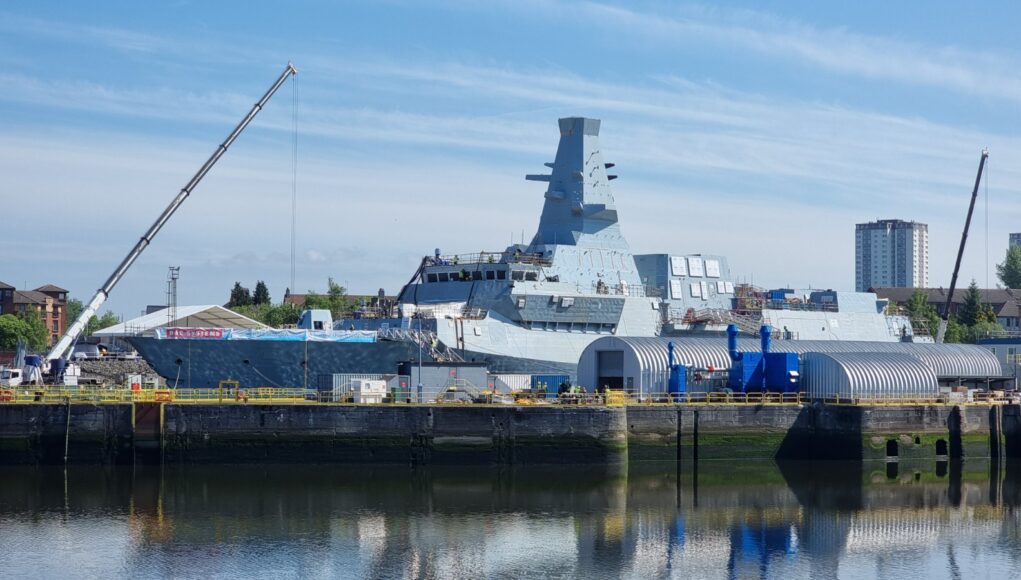
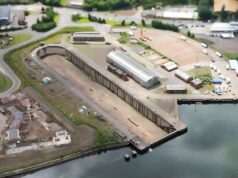
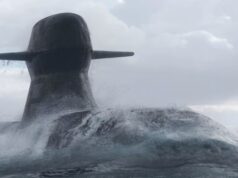
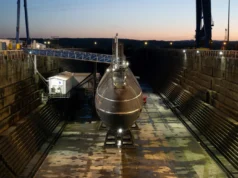
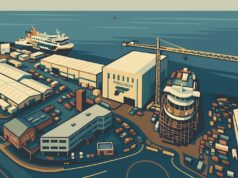
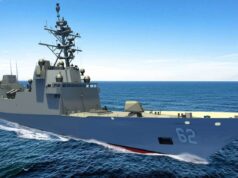
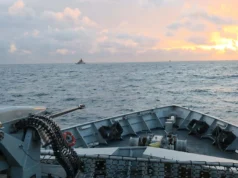

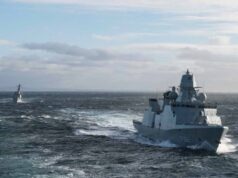
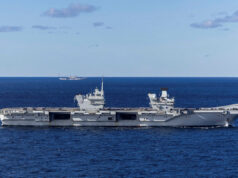
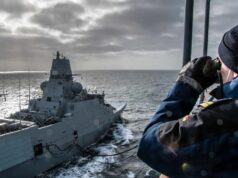

Nearly finished, not.
Not being an expert in the field can anyone tell me how these frigates have detected a hostile submarine , how they go about destroying it . Are depth charges still used ?
They use their towed array to detect enemy subs. They carry a Merlin helo with Stingray torpedoes to prosecute the target, ideally far from the ship. T23s also have Stingray in launch tubes but T26 isn’t set to have them.
Air-dropped torpedoes, I believe, typically from an ASW helicopter or maritime patrol, but with the advent of small sneaky autonomous UUVs and USVs, maybe other solutions will become available. I’m told sub-hunting is a collective sport and you’d take it out with whatever is available.
I think it’s time we follow Canada’s lead and upgrade these to destroyers, the Artisan radar and the mark 41 VLS can handle a larger missile with anti ballistic missile capability like Aster 30 block 1.
Moving forward the T26 will be more of an all round surface combatant with high end ASW capabilities and a much more effective AAW capability, type 83 should be designated as a AAW Cruiser with the T31/32 bing actual frigates.
I agree and I’d ensure we get Sea Ceptor ER like the Poles are getting. The Type 83 needs to be the best of its class with good AS sonar set not like the Type 45’s. All this cost money but the price of the Type 26 is a lot more reasonable so I’d order 5 in batch 2, with the final 2 after Norway gets theirs. I’m sure we’ll need them all.
Isn’t it CAMM-MR Poland are getting?
They’re getting both, though I’m unsure as to whether the CAMM-ER will be carried on the frigates as well, or just in the ground-based role.
Given the relative price and that twice as many CAMM-ERs can be mounted, it’s likely they’ll take a mix.
Am keen to see if MoD are going to order either, and more Sky Sabre units. 6 with 3 more planned is woeful compared to the 100 launchers Poland ordered.
Take your point I was surprised just how small HMS Sutherland looked when she was moored against Belfast but these are a different beast altogether at 8000 tons nearer to T-45 than T-23 but I guess the Navy in recent tradition classes anti submarine ships as frigates and Air Warfare ships as Destroyers with so far little regard for size but T-83 is likely as you say to really resemble a Cruiser certainly if they sat it next to Belfast which it will likely dominate in most proportions.
The Canadian River class could be the base form of the type 83 or a better idea is just to order a few more type 26s. We need hulls and weapons afloat on the water as our current force levels are worryingly and scandalously low.
In reality the RN needs to go back and just revert to 13 of these magnificent ships.
We can probably pay for them using the £20 million bunged out way from Brazil for our two amphibious assault ships. That’s a £3 billion capability gap just opened up in our navy.
You’re going to pay for 5 extra ships, each costing between 800 million-1 billion per vessel, with the proceeds of the amphibious assault ship sale to Brazil?
Millions ,Billions ,not much difference.
Small change.
Was a joke. I was alluding to the fact we have just divested ourselves of a capability that will cost £3 billion to regenerate. Albion and Bulwark are worth a lot more than the miserly sum of £20 million.
I agree. They have both spent half their life under refit and repair and would be very useful in their original role or as training or hospital ships. You see ships discarded by ourselves usually going on to serve other Navies for decades more.
Starmer has this weird way of giving things away when things can be traded to our advantage the way Trump does.
Not suggesting we are as one sided selfish as him but a lot of his ideas are sound.
These now cost £680m each, remove the mission bay for more missiles and you have an AAW version
The Type 26 is too small. The RAN has had significant issues increasing the cell count by just 8 Mk41 VLS and a new radar. I highly doubt, even with the MMB removed, that the Type 26 could actually support a truly capable radar and the magazine depth required for the Type 83.
As to a simply a new AAW frigate, the Type 31 is already better suited to that role.
I think BAE Australia might be partnering in the hope of supplying the new Aus destroyer, so maybe look to a larger Hunter rather than a River.
I agree, we need to be a bit more like Italy in that
1) every escort carries aster 30 or other long range AAW missile to attack air targets out to 100km +
2) every escort has a hull mounted sonar to participate in the ASW screen
3) every escort has an effective AAW capable medium gun that can engage air targets out to 8-10km ( guided rounds )
4) every escort has a joint land attack/ASM
5) every escort has a organic self defence against sub surface threats.
Brilliant the way they do that. We need to wake up!
the T26 tick most of the boxes usually used in describing ships as a destroyer that is to be around 5,000 tons, fast, manoeverabl and heavily armed and mission flexible. with a big rat,and equipped to change its role within a carrier group
Sadly she still looks far from complete and still awaiting a 5 inch gun barrel., I would have thought the naming ceremony would occur a bit further down the road?
You can fit a gun barrel in a day, and they are changed regularly as they are used. What is more interesting is that there is a lot of external equipment still to be fitted such as the main radar, so she is a long way from first sea trials. I appreciate that the first of class is always what you learn on, but it’s still taking a mighty long time to get her out at sea.
Is possible to swap a 5″ main gun barrel at sea, do you know?
When I was in, a long time ago, we had the 4.5” mk 6 twin turret, and the changes were always a dockyard job, with a crane. The problem at sea will be managing the weight of the barrel as the ship moves.
Generally agree with all the 5 comments I see in the forum so far. For a couple of years now, since the unveiling of the Australian and Canadian T26 variants, I have come to the conclusion that the best way forward for the RN to regenerate its escort combatants is to focus on a 4 hull strategy of which 2 are currently in production, the T26 and T31.
The 4 hull or strategy would be for
1. The current 8 T26 ASW being built and commissioned to be followed by the launch of an additional 6 built to the Canadian specification in terms of size, initially as adjuncts but eventual replacements for the T45 destroyers. Call this follow-on destroyers replacements T46, and have them equipped with upgraded stuff from the T45, such as improved radars, the 48-60 VLS systems for the Aster 30NT/1 missile, a 2x 57mm guns, the requisite CIWS etc., helicopters, a hull mounted sonar and stations to operate and receive data from ASW unmanned craft as well as from the ASW frigates, NSM and antisubmarine torpedoes.
2. T31 general purpose frigates completed then design used for follow-on of 5 additional more ASW tune, mine clearing mothership with remote vehicles, the much spoken of T32
3. The T83, a12-15000 ton vessel, which would now be designated as a Cruiser focused on anti-ballistic anti-hypersonic missile defense. The RN might look to partner the Japanese on this project. The T83 can then become a vessel not only for the CSG defense role but also the UK home defense role.
4. Final hull design would either be a new design or evolution of the current Rivers B2 OPVs. I would prefer a new design modeled on the Dutch modular Sigma design which allows for vessels sized from 800 to 3,000 tons. This forth hull would allow for development of Sloops, OPVs, Corvettes, fast missile boats, MCMs, border patrol / coast guard boats.
The UK government could use the 4th hull design to spread work to more UK naval yards for various orders of these small vessels. Also with the T26 and T31 designs the UK now having well tested designs can now focus on lowering construction cost because of a study order book spread over the next 15 years or so. This I believe, with the addition of the small vessels 4th hull variant, would probably attract orders from navies around the world.
Issue of manning these vessels is for another day, but there is a readily available way to man many of these vessels. I will simply say, if the RN is failing to get personnel from the Home Islands (the UK), it should look to its population of colour in the Home Islands, then its oversees territories and finally to the Commonwealth. In the case of the Overseas Territories and Commonwealth the RN can have different pay scales, base their OPVs, patrol boats and GP frigates in the territories where they Patrol. So for example the B2 vessel in the Caribbean can be manned by crews from Crown Territories from the BVI, Anguilla, Bermuda, Turks and Caicos, Cayman, Montserrat. It shouldn’t be too difficult to recruit and train 100+ souls to man a B2 on a rotational basis. Officers can be from UK. Same can be done for vessels in the Pacific and Far East, Indian Ocean etc. Also same can be recruited to man the support vessels. Note that the RN can recruit, train and retain thousands of university graduates with engineering and tech degrees for less than half the going rate for a UK secondary school leaver. Times are changing, demographics are changing, the RN needs to change and adapt to the realities of the time.
I don’t agree with all you say but in particular why would you use a type 31 as a mine hunter mother ship. The existing batch 2 OPVs would be up to the job and for use in areas where drone attacks are increasingly likely a decent fit out of air defence weapons would be possible on a hull of this size, call them Corvettes if you need a name but the job doesn’t need a large general purpose frigate to operate across a few miles each day or to deliver mine hunting systems to a new location.
On the T31 mine hunting mothership role, isn’t that what is being proposed as one of the roles of the T32? If that is the case and the T31 is being pushed for the T32 role, then I am only stating what is being proposed by the powers that be. As I state B2 platform is okay but I am thinking that it is less versatile than the Dutch Sigma platform.
I’m mostly in agreement with you, but I think the AH140 design is a much better platform for the second tier AAW ship than T26. It’s a much more cost-effective design and its parent is an AAW frigate, so we know it can support the necessary radar, etc.
For T83, the Japanese are entirely subsumed into the US missile and combat systems, so going along with them would mean abandoning our sovereign capability. It looks like we’re really going to have to go it alone in that regard, unless someone very unexpected decides to develop top tier AAW.
Mr SailorBoy – I agree that the T31 would be the cheaper AAW frigate to build right now but I think the T26 platform is better future proofed for the role, especially in light of the fact that we are being told that electrical power generation is going to be important for future weapon systems such as lasers (Dragonfire), Railguns, more powerful radars. The T26 architecture with the gas turbine power plant will make it easier to make incremental upgrades to the platform over the coming 2 to 3 decades similar to what has been happening with Arleigh Burke platform of the USN. The T31 can be modified for gas turbines but that will then change the cost dynamics thus making the platform no longer economical, and also being smaller than the T26 platform harder to cram more equipment into in the future.
I agree the Japanese are “entirely subsumed in US missile and combat systems: as you say, but I think it might be worth a try to work with them on the platform design for the T83 in the areas of hull design and size, shared power plant, and construction methods and tooling.
On the contrary, the T26 propulsion setup is pretty much baked into the design, and the MT30 is about as power dense as things get so there can’t be much room for improvement.
T31 is very flexible, you can have all sorts of different diesels and you might even be able to fit MT30 if necessary. Even the Iver Huitfeldt parent class has much larger DGs than the standard T31, so there’s room for improvement already.
Additionally, T26 is very packed in. The top weight margins are much smaller because it already has the heavy mk41, tall mast etc. and the hull form is so heavily optimised towards a single role. T31 has acres of deck space and internal volume available for VLS without compromising stability, which has been a massive issue with the Hunter class for Australia, which is about the baseline of what a follow up T26 should achieve.
With T31 you get what you pay for by adding only the features needed to complete the role. A T26 AAW would have a whole load of extra costs associated with the ASW hull, propulsion and sensors, that either need extra cost to design out or add to the unit cost.
I agree with regards to the Japanese programme. The ASEV looks to be beyond the scope of the Type 83, or at least, beyond what we could economically achieve, whilst requiring significant redesign to support Aster.
Pre war the RN was generally ordering a class of 9 destroyers a year. As war approached they ramped it up considerably.
Yes I agree we should always be building continuously. That way we should have about 35-40 escorts in service.
That seems very reasonable number. Current levels are woefully inadequate. A miserable 14!
Sub-sub standard.
Branaboy – some of your options make sense,but (1) is a definate no-goer.It would be pretty pointless to build 6 new Ships to the RCN River class design,which uses Sensors and Weapons that are alien to what the RN uses and needs going forward.To cherry pick Weapons and Sensors from the Type 45 and install them on the River Class might be asking for a world of pain,the growth margins are limited .On (2) making a Variant of the Type 31 with more ASW Focus would be logical, but you would have to balance that out with the extra costs involved – it might be the case that a few more Type 26 work out cheaper in the long run.(3) and (4) id agree with.My solution for (1) is an evolved/product improved Type 45 design to get to your Type 46,using what knowledge has been gained with PIP improvements and operational experience.
More ‘GP’ frigates, T31 variants, must be top of the list. Presence is the prerequisite to deterrence. Navantia have a family of configurable OPVs, the Avantia. This might fit the bill for your successor to the River 2. I’m sure they could knock these out ‘at pace’ for a good price.
“will simply say, if the RN is failing to get personnel from the Home Islands (the UK), it should look to its population of colour in the Home Islands”
FFS it’s the 21st century not the 1930’s…
The RN recruits eligible British and Commonwealth citizens that regardless of sex or ethnicity. This will upset you, but it doesn’t have a ‘whites first’ policy.
Mr. Spock I am not upset at all. You rather appear to be triggered by my post. Sorry to upset you. All I am suggesting is that the demographic from which the RN has traditionally recruited is declining in terms of available and suitable young people, that is the Grammar or Comprehensive school leaver for non-commission officers and Public School leavers for officers. This group of young people are also increasingly attending and graduating University and thus normally are able to get higher paying jobs once they leave university. On the other hand similarly educated and qualified young people outside the UK can be recruited for less than half the price of the UK graduate. All I am suggesting is that the recruiters should try harder to fill non-critical roles such as manning the OPVs stationed overseas in places like the Caribbean, South Pacific, Indian Ocean, and the Fleet Auxiliary positions.
Crewing the OPVs is critical, as those are the sailors who will crew the warships of the future. Where do officers get their first ship commands after mine hunting goes fully automated? Nor can you have British officers and foreign crew. We need a coherent Navy and while that can include a proportion from the Commonwealth, that has to be limited to ensure sovereign control. You can’t just undercut costs and employ what will be seen as cheap, second class sailors from abroad.
I believe that much of the armed forces recruitment problem comes from the attitudes we see in schools to the country’s history, the disdain of certain parts of the media, and the low priority Defence takes in the thoughts of our politicians. There’s the problem and in my opinion there has to be the solution.
I could quote Kipling, but everyone here knows it’s not a new problem. It’s just exacerbated by a long peace.
Spot on.
To quote Kipling.
“He does make exceedingly good cakes”
halfwit by name, halfwit by nature….:-)
BAE Systems need to work on their grammar… Should read, ” HMS Glasgow… An historic ship, an historic city”
Standards dear boy, standards.
The H in History is not silent.
Still say “an” for historic, though.
No idea why, just do.
Given the rule of 3, the RN clearly needs 9 to have 2 available for the CVBG, and 1 for TAP.
Interesting that the open area below the Bridge that many on here suggested would be Plated over has not been Plated over.
I really do not see the point of doing this ceremony now as the ship is nowhere near completion.
It would be better to do it a few days before the ship is ready to leave the dry dock for sea trials.
Did anyone else do a double take at the suggestion Glasgow will be in service by 2027?
Following her build is utterly excruciating.
She looks FAR from finished.
We built Nelson and Rodney in half the time its taking to build her..
Blame the Treasury, that’s what they wanted.
It’s likely a lot of the work has been internal to date – no point fitting the expensive external toys if there’s no power and cabling ready to service them.
Prewar craftsmen were of an altogether order in the UK. Real pride in their work and fast workers.
Most RN cruisers were built in 4 years and the hull plating was all galvanized.
In civilian yachts they could always build very large ones in about 6 -8 months. Medium size 8 meters actually 48’ long in 7 -8weeks!!!
We stand on the shoulders of giants; or should do.
Im just glad that it will be more offensive and not just high on defence only.
I for one can’t wait to see one of these at sea – perhaps the most beautiful class around?
Even better if we painted her like the new Rivers.